Teaching Slides
|
Transcribed Class Notes
|
|
Key Concepts In Red
|
 |
Best post is no post at
all. Why? Post may cause fracture. Why use post? It adds retention
for the crown. |
 |
In case of insufficient
coronal tooth structure, post provides retention for the crown, especially
during shearing forces(side to side chewing) |
 |
|
 |
|
 |
Two types of posts: 1.
cast post: Advantage: gives a custom tight fit to the post space preparation.
Disadvantage: tapered cast post creates wedge effect (it concentrates
forces to one point, and it may increase the chance of fracturing)
2. pre-fabricated post: variety of designs and works relatively well. |
 |
shape: rounded end is preferred
over tapered end. |
 |
Posts that are too short
may not have adequate retention. |
 |
A rough and serrated surface
allows more surface area for cement thus increases retention. Risks
of removing posts: fracturing and perforation. Excessive removal of
tooth structure makes the diameter larger and the coronal structure
may become too small. |
 |
Excessive removal of tooth
structure may cause fracture and perforation. |
 |
There must be a balance
between post length and apical seal. |
 |
The crown binds the post/core
and the tooth structure together. |
 |
Ferrule
effect can help prevent fractures. |
 |
|
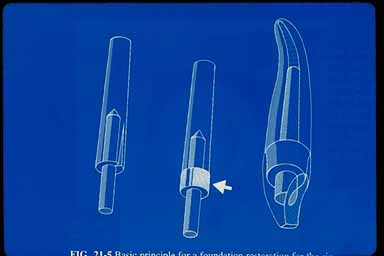 |
|
 |
|
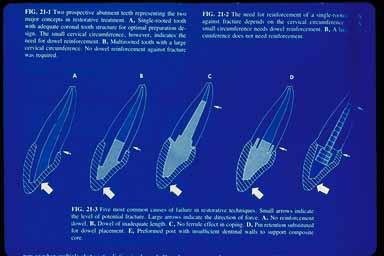 |
Not all endodontically
treated teeth need post. The key is the evaluation of remaining tooth
structure. |
 |
|
 |
|
 |
|
 |
|
 |
Gold alloys for cast post.
Titanium alloys and stainless steel for pre-fabricated. |
 |
|
 |
|
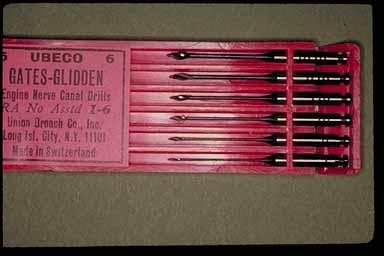 |
Gates glidden files are
used to remove gutta percha. Striation marks from 1 to 6 corresponds
to the number. |
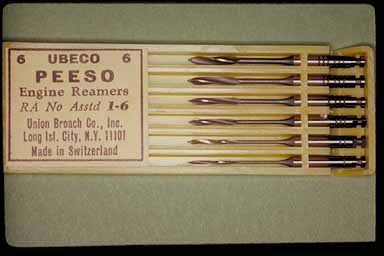 |
Peeso reamers are used
to prepare post space. They have aggressive cutting actions and caution
is needed . Striation marks from 1 to 6 corresponds to the number.
|
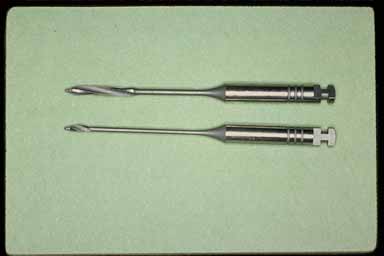 |
Comparison of peesos to
gates. |
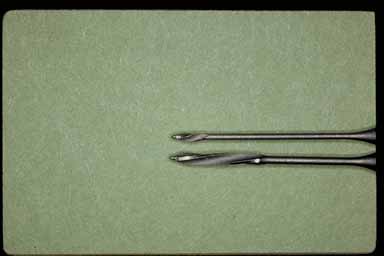 |
|
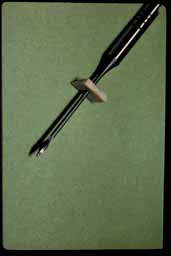 |
Measure the amount of gutta
percha removal with rubber stoppers. Excessive removal of gutta percha
may lead to loss of apical seal. If there is adequate apical seal,
additional gutta percha can be added. |
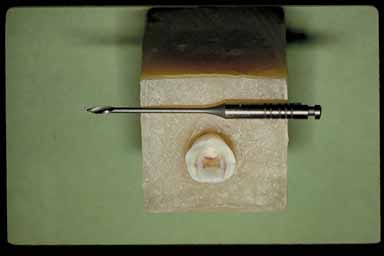 |
|
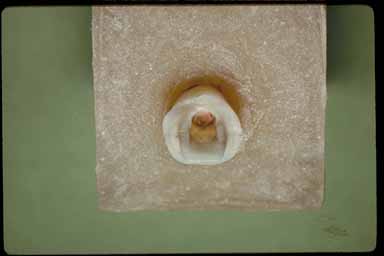 |
|
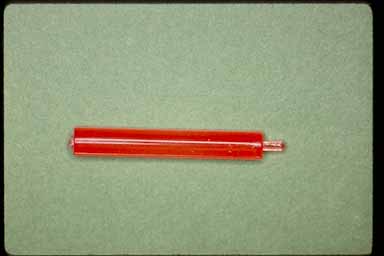 |
The following slides show
pattern fabrication of cast post. |
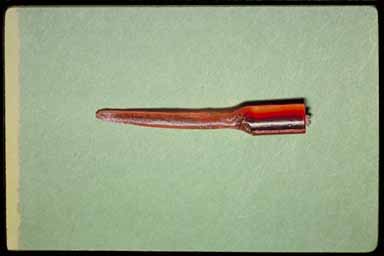 |
|
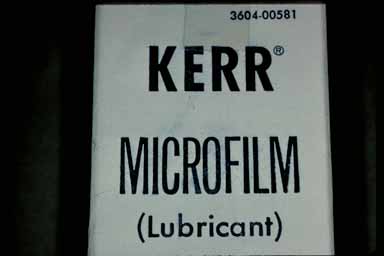 |
Microfilm used as a lubricant
during post preparation, not saliva! NO saliva. |
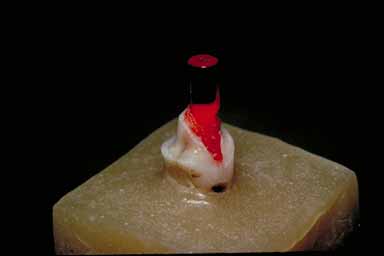 |
Make sure there are no
undercuts, otherwise Duralay may be locked in. |
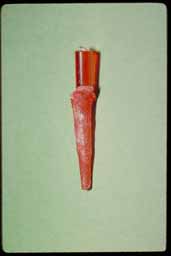 |
Finished pattern |
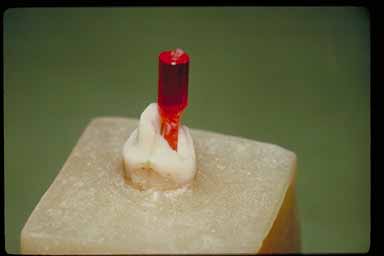 |
|
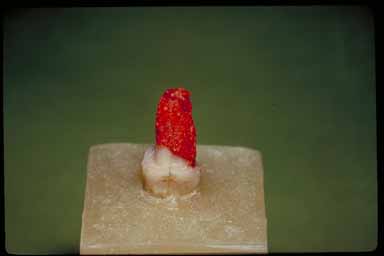 |
|
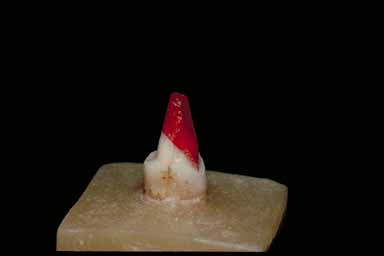 |
|
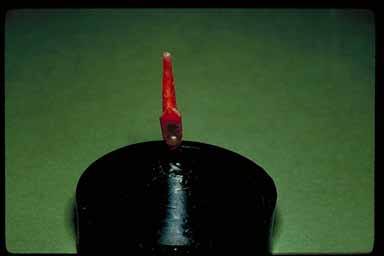 |
|
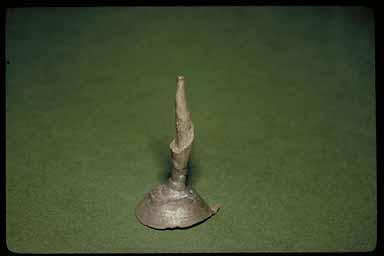 |
|
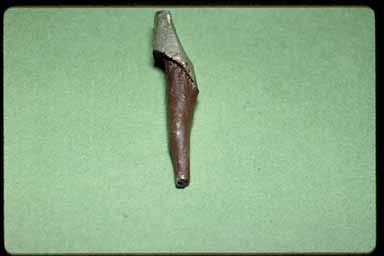 |
|
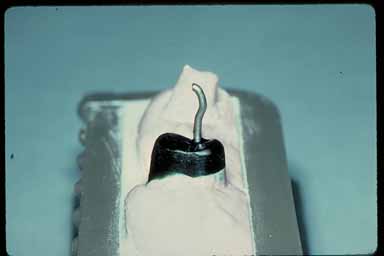 |
An example of pattern made
with wax. |
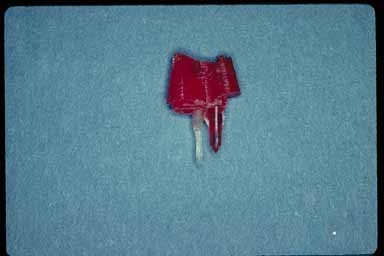 |
When two or more cast posts
are used, parallelism is important. |
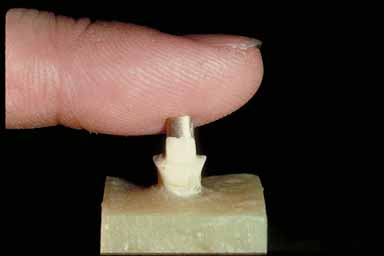 |
Gentle finger insertion
to prevent fracture. |
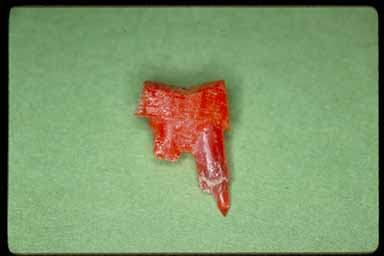 |
post pattern for upper
molar |
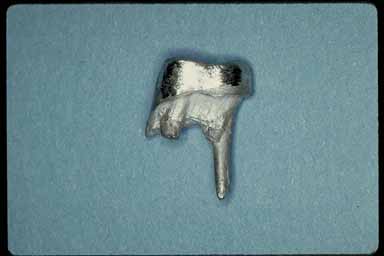 |
cast post/core |
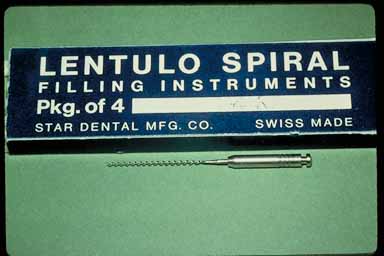 |
Lentulo spiral is used
to insert cement but is prone to separation. |
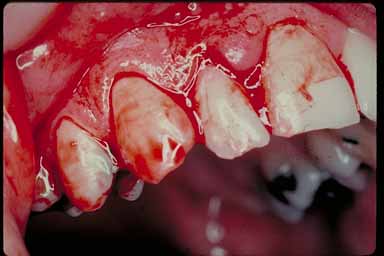 |
Case presentation: trauma
to #7 |
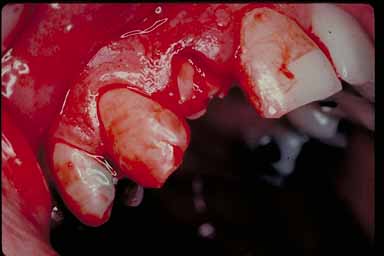 |
Fractured crown removed |
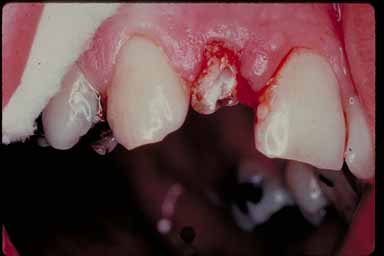 |
Root canal initiated. Split
dam technique was used for isolation |
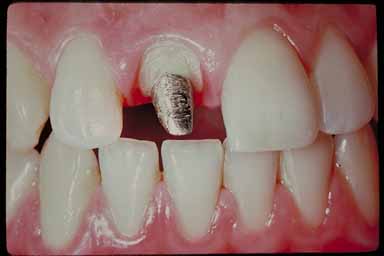 |
An example of cast post
and final margin preparation. |
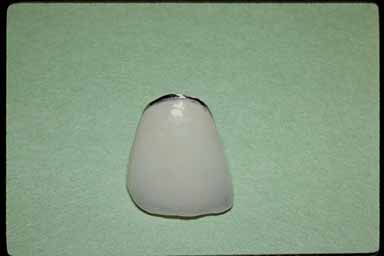 |
porcelain fused to metal
crown |
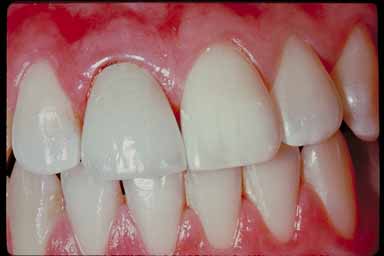 |
Final cementation |
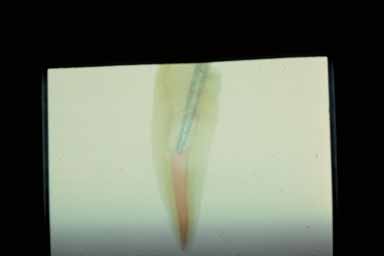 |
|
 |
Posts can be removed but
be careful of fracturing and excessive tooth structure removal. Cast
post removal: 1.trough is created around post 2. Spartan peeso electric
ultrasonic used to remove cement and loosen the post. Post removal
vs. Apicoectomy: 1.post removal is preferred when poor obturation(void)
is observed. 2. apicoectomy may fail due to poor seal of the apex
and apical anomalies (lateral accessories canal) Apicoectomy remove
tooth structure. |
 |
Two reasons
to use rubber dam during post preparation: to prevent bacterial reinfection,
and to prevent aspiration of the post. If voids are present after
obturation, rubber dam placement prevents saliva contamination into
these voids. One disadvantage of using a rubber dam is the inability
to check for occlusal clearance. |
 |
|
 |
After successful root canal
treatment on a nonvital tooth with periapical lucency, we do not wait
for post/core preparation because 1. Aesthetic consideration for anterior
teeth 2. Research advocates post/core insertion after successful root
canal treatment (if patient is asymptomatic) 3. temporary restoration
increases the chance of fracturing. |
































